Case Study
San Sebastián International Film Festival
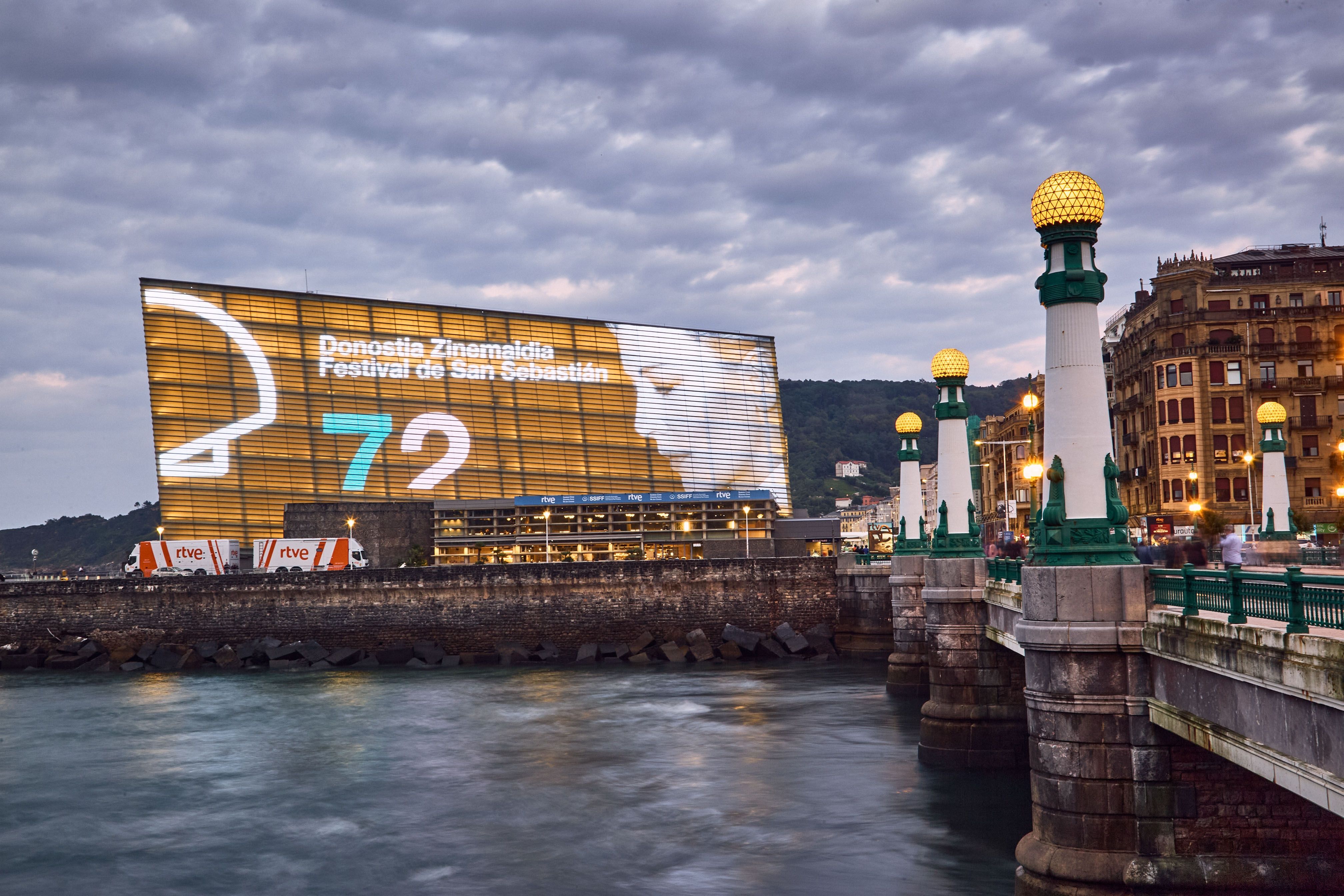
How San Sebastián International Film Festival Employs Screenwriter and Producer to Improve Content Management and Safeguard Quality and Performance

Case Study Overview
 In the dynamic and complex environment of international film festivals, efficient management of content and KDMs is paramount to delivering a seamless audience experience. For the San Sebastián International Film Festival (SSIFF), the logistical demands of running an FIAPF-recognised competitive feature film festival required a sophisticated solution capable of balancing modern efficiency with the festival’s respect for tradition.
In the dynamic and complex environment of international film festivals, efficient management of content and KDMs is paramount to delivering a seamless audience experience. For the San Sebastián International Film Festival (SSIFF), the logistical demands of running an FIAPF-recognised competitive feature film festival required a sophisticated solution capable of balancing modern efficiency with the festival’s respect for tradition.
Before implementing Arts Alliance Media’s Screenwriter and Producer Theatre Management System (TMS) solutions, SSIFF faced several operational challenges: content and KDM management was constrained to individual screens. Content delivery and Quality Control procedures were manual and labour-intensive, while a restrictive operational framework limited scalability.
Recognising the need for a transformative solution, SSIFF employed Screenwriter and Producer to address inefficiencies across the festival circuit. The result? Centralised management and improved visibility for all content and KDMs, faster and more automated content delivery processes, collaborative and streamlined Quality Control, and a scalable software framework capable of supporting future growth.
By embracing these advancements, SSIFF has optimised its technical operations, meeting the demands of a world-class festival while preserving the artistry and meticulous quality that define its legacy.
About San Sebastián International Film Festival
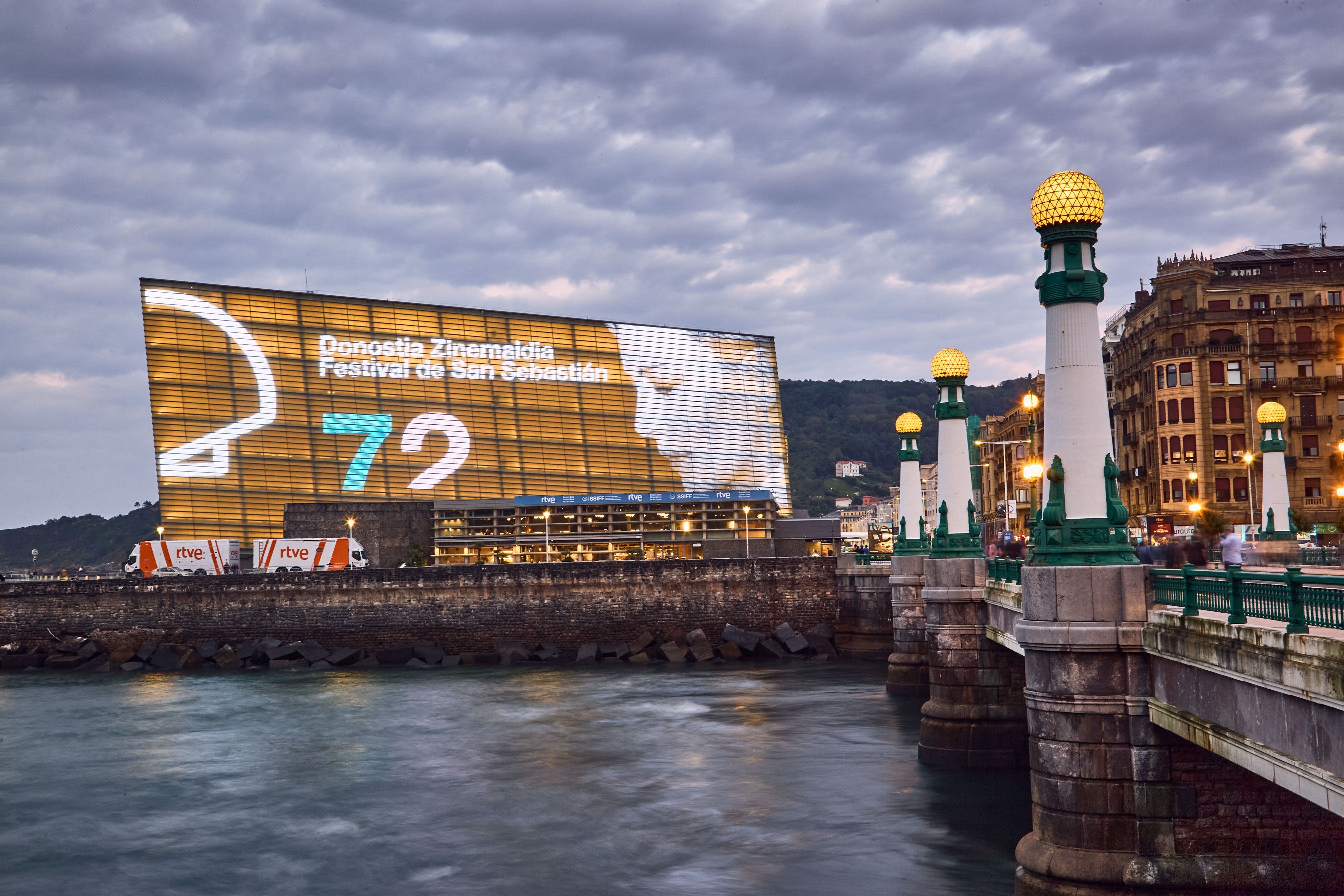 Credit: Pablo Gómez
Credit: Pablo Gómez
The San Sebastián International Film Festival (SSIFF), founded in 1953, is one of the most prestigious and longest-running film festivals in the world. Held annually in the coastal city of San Sebastián, Spain, it showcases a diverse selection of films, from international premieres to emerging talents. The Festival prides itself on promoting artistic excellence, with awards like the Golden Shell for Best Film.
SSIFF is renowned for its cultural impact, star-studded red carpets, and its role in celebrating global cinema, drawing filmmakers, industry professionals, and cinephiles to this vibrant Basque destination.
About Lucas Iaccarino
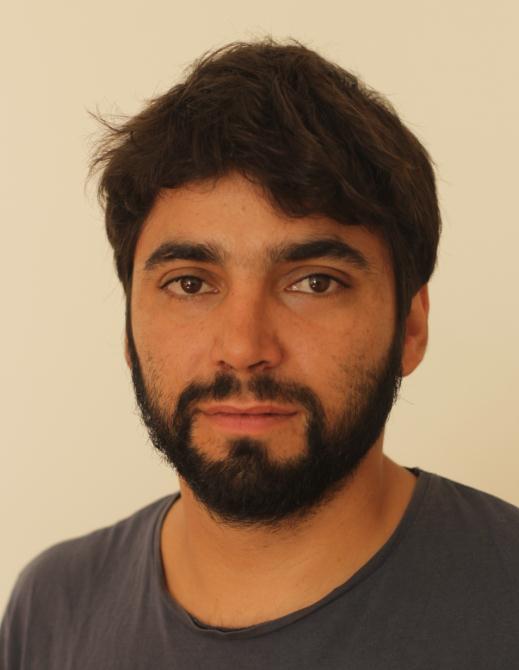 Lucas Iaccarino, SSIFF Technical Manager
Lucas Iaccarino, SSIFF Technical Manager
Since joining the Festival’s technical team in 2016, Lucas Iaccarino has played a central role in its success. As Technical Manager since 2019, he oversees a versatile team of around 50 professionals, ensuring top-tier quality control, seamless site setup and smooth festival operations.
His leadership and attention to detail are integral to maintaining the high technical standards that define the San Sebastián International Film Festival.
“My duties are to plan and manage the set up and guarantee the performance of all the stages’ technical assets. Regarding the reception of the DCPs and 35mm, I manage the quality control and the workflows we use to receive, check and deliver them to screens. Plus, the setup of the whole cinemas, including technical aspects like the projector, server, fibre optic connections and seating so we can ensure all the spectators enjoy a great performance.”
1. Enhancing Festival Visibility
The technical setup of film festivals is uniquely complex, reflecting the diverse needs and characteristics of each event. These operations vary widely based on factors like the festival's size, the mix of permanent and pop-up screens, the existing local hardware, and, most intriguingly, their distinct individuality. This individuality often manifests in the niche themes festivals carve out for themselves or the artistic and nostalgic elements infused into their technical processes. As a result, every film festival environment demands a tailored and thoughtful approach.
This individuality extends to software usage. Unlike typical exhibition operations, where the TMS is installed at a single site to manage all screens within that location, festivals will adopt innovative configurations. For instance, at SSIFF, Screenwriter is set up to oversee all screens across the entire festival circuit, despite those locations being dispersed.
 "That's the spirit of how we manage it. We have several locations, several venues, several screens along the city, maybe 2 kilometres of difference between one place and another, but all in the same environment."
"That's the spirit of how we manage it. We have several locations, several venues, several screens along the city, maybe 2 kilometres of difference between one place and another, but all in the same environment."
The whole festival is managed as two separate environments, with four Screenwriter TMS’ each managing its own selection of sites and screens.
The Festival Infrastructure – Screenwriter TMS 1 managing 4 locations with a main and backup server (8 screens):
• Kursaal (2 screens) • Teatro Victoria Eugenia (1 screen) • Teatro Principal (1 screen) • Tabakalera (3 screens)
The Sade Infrastructure – Screenwriter TMS 2, 3, and 4 managing 3 locations (20 screens):
• Screenwriter TMS 2: Principe Cinemas (10 screens) • Screenwriter TMS 3: Antiguo Berri Cinemas (8 screens) • Screenwriter TMS 4: Trueba Cinemas (2 screens)
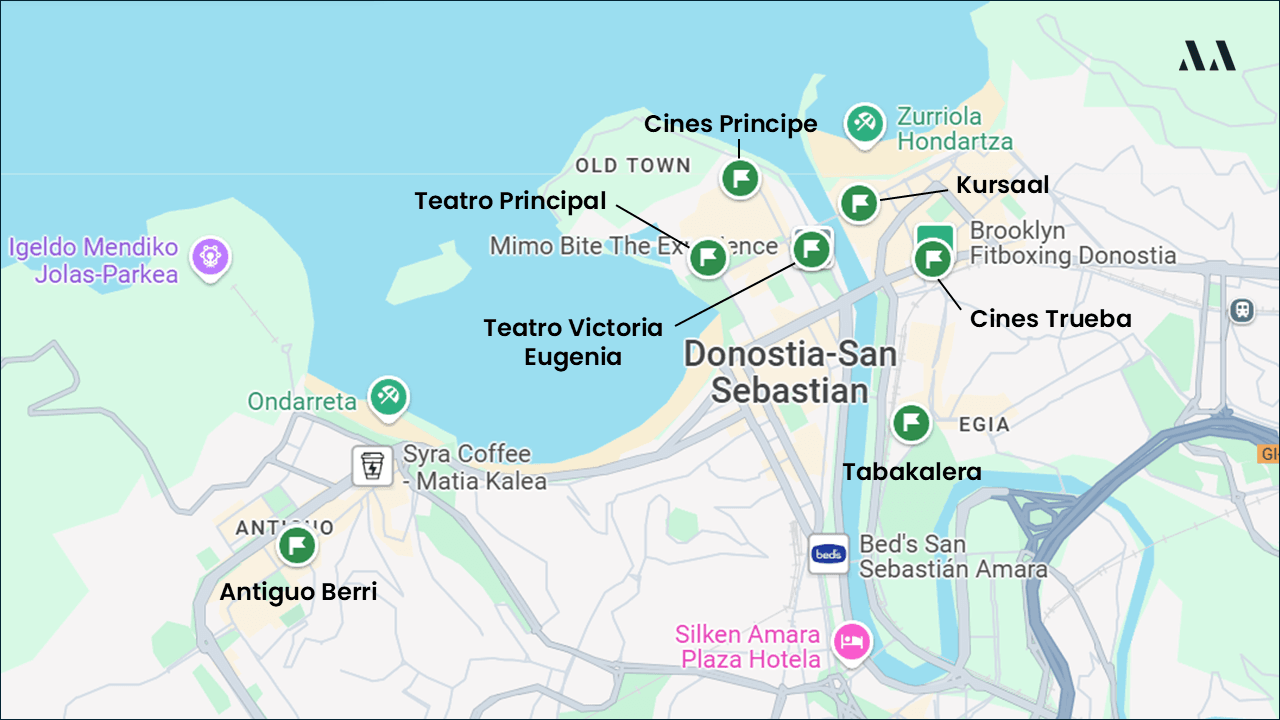
Using Screenwriter in this individual way allows Lucas and his team to gain a birds-eye view of the Festival Infrastructure. For a centralised view of both the Festival and Sade Infrastructures, including all four instances of Screenwriter installed throughout the city, Lucas relies on Producer, Arts Alliance Media’s cloud based Enterprise TMS, to provide a birds-eye view of all screens, content, and KDMs being managed at local level.
Refer to 'Managing Content and KDMs with Ease' for a detailed overview of how Producer and Screenwriter work together in this environment.
2. Managing Content and KDMs with Ease
For a event of SSIFF’s calibre, achieving peak efficiency from a flawless technical setup is essential. However, these operational aspirations go hand-in-hand with their commitment to individuality and tradition, delivering a harmonious balance between innovation and heritage. This thoughtful integration of modern technology with a respect for time-honoured practices lends a distinct touch of sophistication.
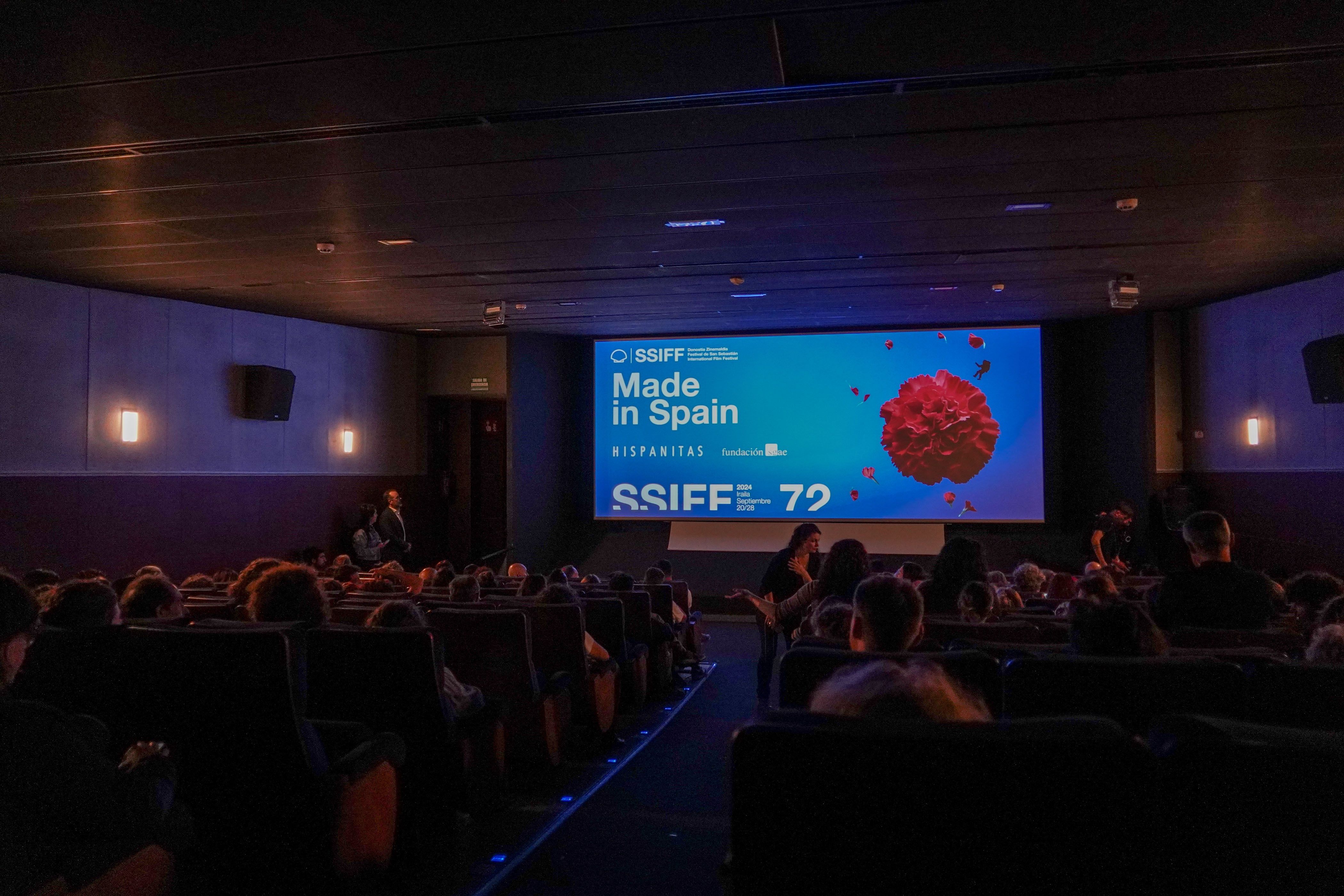 Credit: Nora Jauregui
Credit: Nora Jauregui
“We are old school in terms of projection. We have projectionist in each venue as we don't schedule screenings. It's all manual because that's part of the spirit of the Festival. We believe that the human must be present. Where there are presentations and Q&As, we have to be ready for potential changes to the schedule. Plus, there is a lot of people to enter and exit the screen room so scheduling isn’t necessary.”
But there is the other side which is to deliver the content, to have the full picture with everything set up for that person to arrive and to screen what Screenwriter and Producer has provided us.”
Since integrating Screenwriter into their operations, Lucas and the SSIFF team have streamlined workflows and modernised processes to deliver year on year improvements. Despite a broad range of advanced functionalities available, Lucas outlines just two capabilities which has delivered that ‘full picture’.
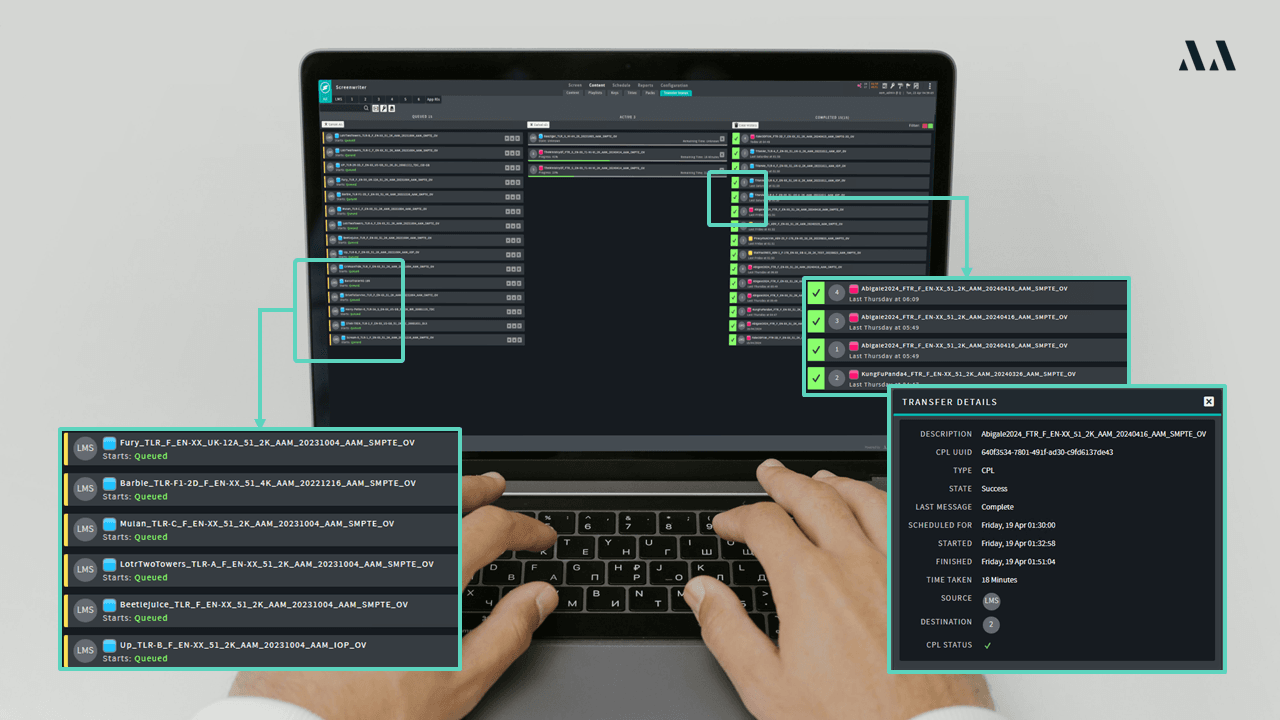 Screenwriter's content transfers dashboard
Screenwriter's content transfers dashboard
“Content transfers and KDM deliveries. They’re the main things we use."
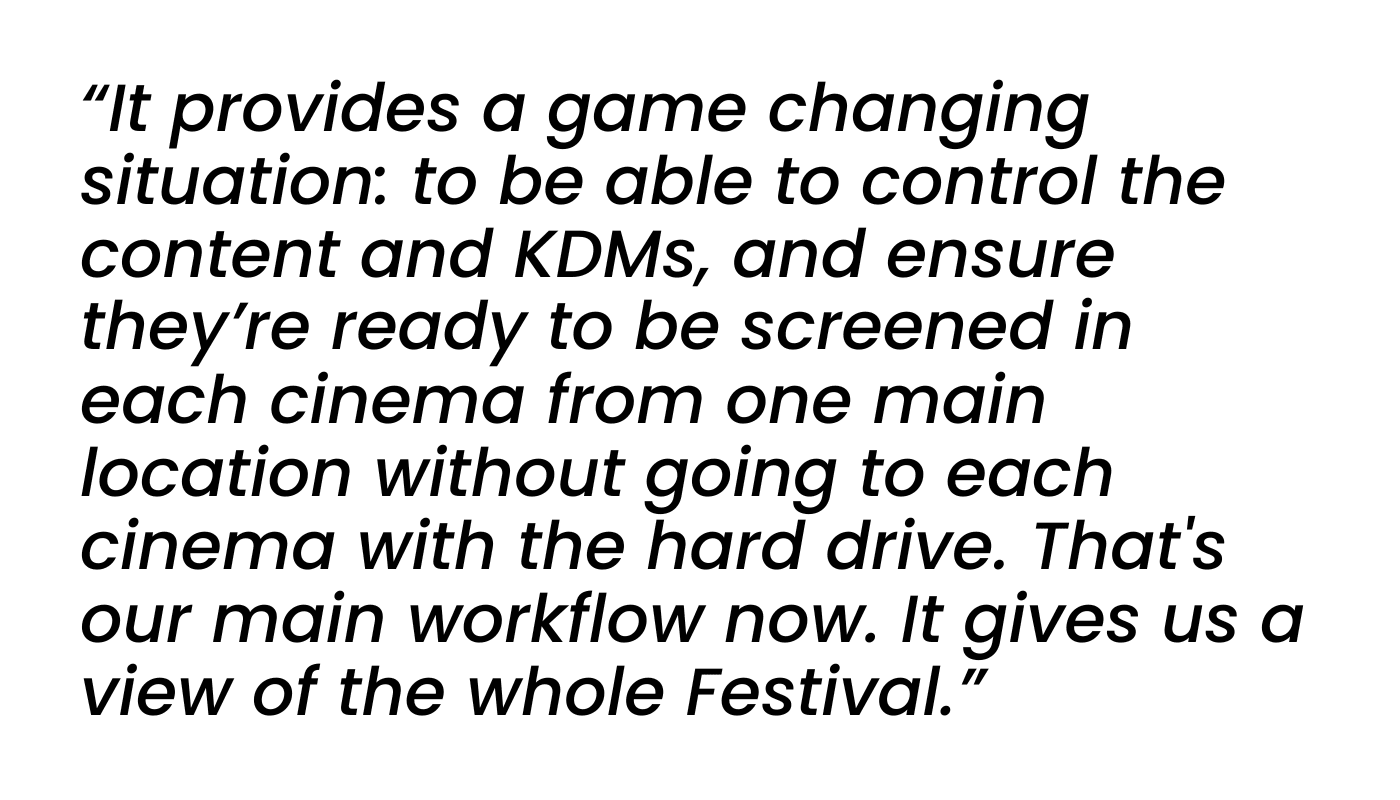 Managing KDMs (Key Delivery Messages) is a crucial aspect of cinema operations. In a typical multi-screen cinema setup, users can rely on automated functions like KDM emails, where Screenwriter periodically checks for inbound KDMs, to streamline the process. However, in a festival environment, users operate slightly differently.
Managing KDMs (Key Delivery Messages) is a crucial aspect of cinema operations. In a typical multi-screen cinema setup, users can rely on automated functions like KDM emails, where Screenwriter periodically checks for inbound KDMs, to streamline the process. However, in a festival environment, users operate slightly differently.
“We load each KDM to the TMS manually, not with the KDM email, to be sure that only the right content is going to be unencrypted because we manage a huge quantity of content, including second versions of films or non-approved QC materials. Our KDM management is very personal, very detailed and very human. ”
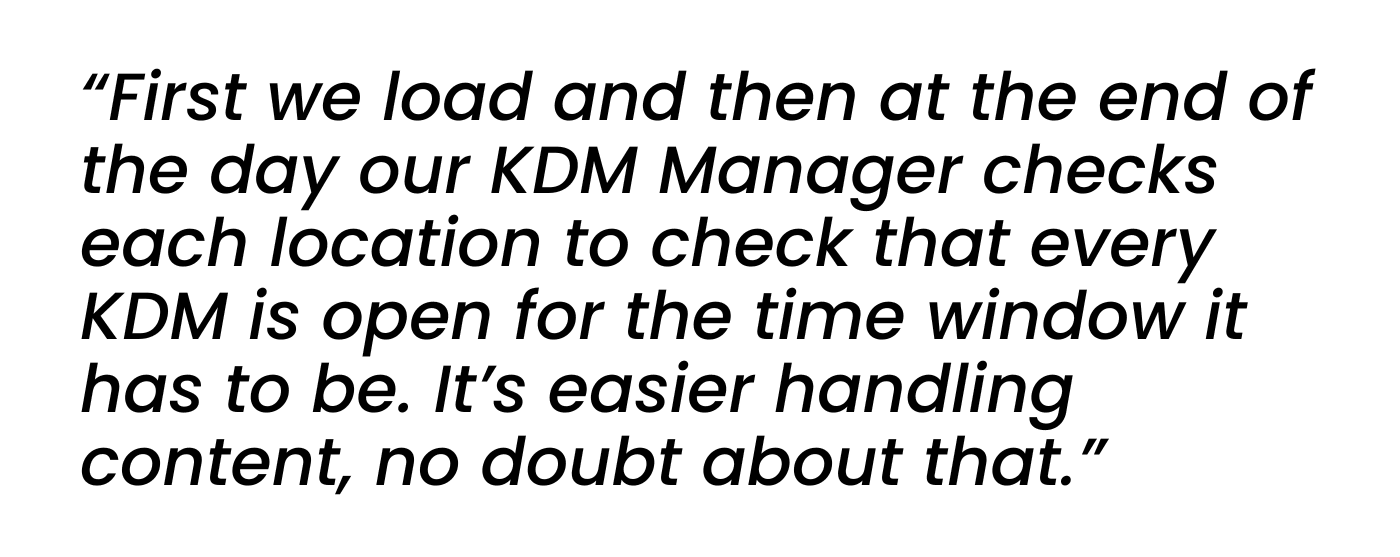 Despite opting for a more cautious ingestion process, Screenwriter delivers significant time savings by automatically assigning KDMs to their designated screens, seamlessly matching each KDM certificate with its corresponding media block.
Despite opting for a more cautious ingestion process, Screenwriter delivers significant time savings by automatically assigning KDMs to their designated screens, seamlessly matching each KDM certificate with its corresponding media block.
Screenwriter also offers users a clear and visual status of all ingested KDMs, listing them in a colour-coded dashboard with validity dates, UUIDs, serial numbers, and a supporting reference key. Users can download Missing KDM Reports which can be filtered by title or site and emailed to the address registered to the account.
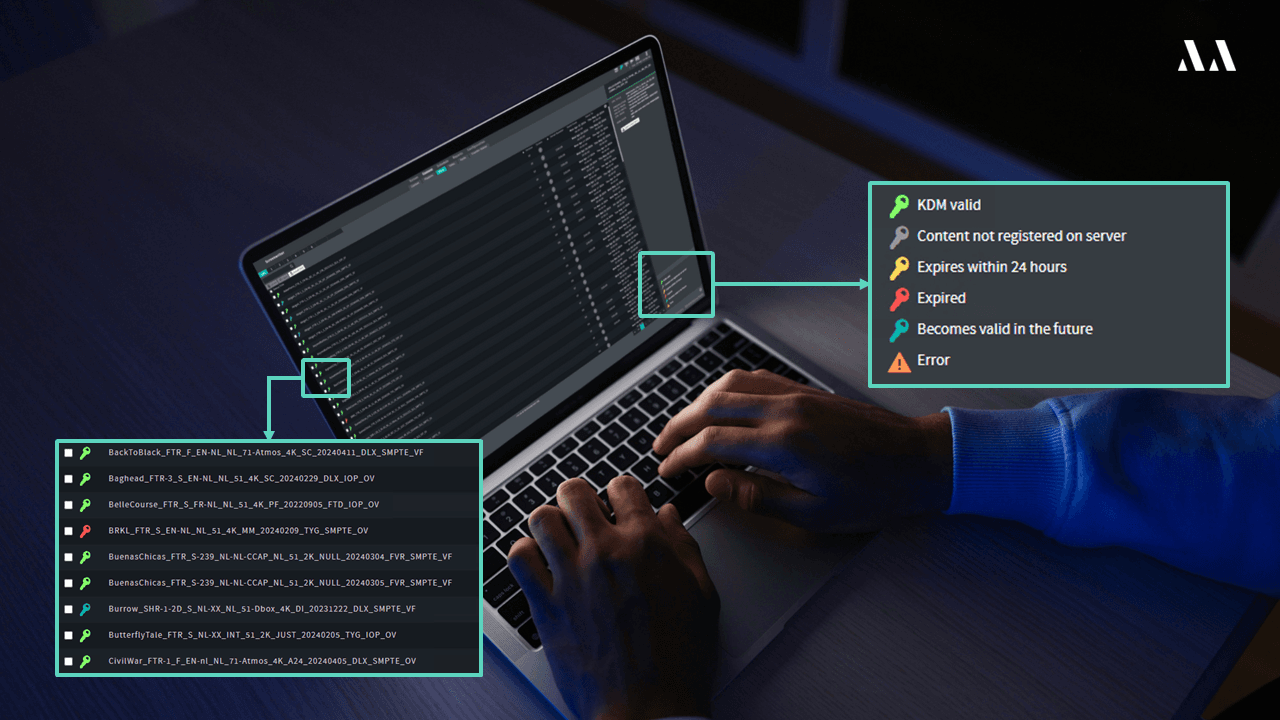
“We are very artisanal, really manual, but the time saving is huge. It's very different from walking through the city with a hard drive, going from one spot to another, waiting for the hard drive to ingest the DCPs in each location."
 To improve DCP management, Screenwriter offers clarity by providing full visibility of each DCP, not just the file, and communicating the ingestion status to users, eliminating any uncertainty in the process.
To improve DCP management, Screenwriter offers clarity by providing full visibility of each DCP, not just the file, and communicating the ingestion status to users, eliminating any uncertainty in the process.
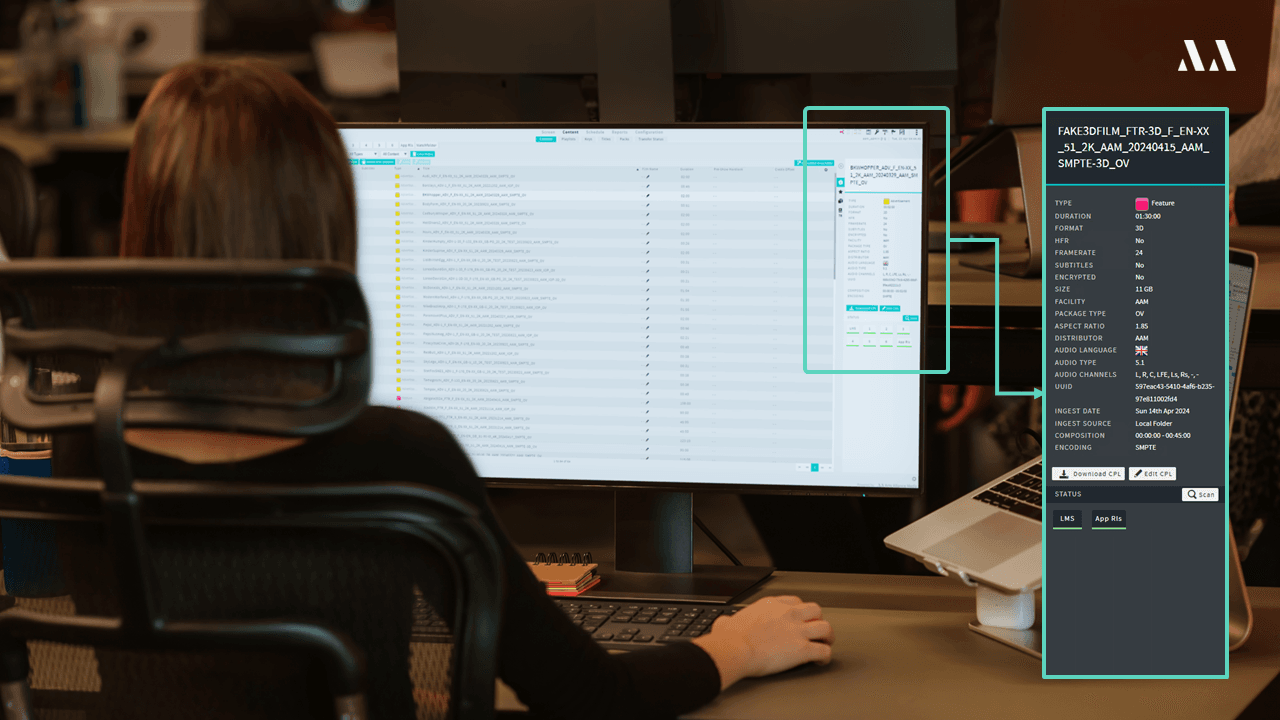
 "Film Festivals have several hundred titles with different CPLs with different KDMs in different venues within a very short amount of time so, with Screenwriter, it's ideal to check that everything is set up and scheduled to deliver content at the time it has to be done.”
"Film Festivals have several hundred titles with different CPLs with different KDMs in different venues within a very short amount of time so, with Screenwriter, it's ideal to check that everything is set up and scheduled to deliver content at the time it has to be done.”
With over 16 years of experience in festival management, Lucas deeply appreciates the value Screenwriter brings having relied on fully manual processes in the past. While those methods fostered a personal, hands-on approach, they also made individual tasks significantly more time-consuming. Reflecting on his journey, Lucas vividly recalls those traditional operations.
“I know the difference because, when digital cinema first started, we didn’t have a TMS at festivals. Back then, I was the delivery guy who was making big hard drives. I would get one two-terabyte hard drive and load It with maybe 10 films. Then I would go to a cinema with that hard drive so they can manage their own content, and then to another cinema and another. It’s at least one person’s work for 10-15 days. It’s another structure.
Now, it’s time-efficient, and really, with all the DCPs coming digitally, it will not be possible to do San Sebastian Film Festival without the TMS library.”
 Credit: Gari Garaialde
Credit: Gari Garaialde
Adding to their TMS toolkit, SSIFF took their operations one step further in 2024.
Having made Screenwriter perfectly suited to their operations since 2016, Lucas added Producer, Arts Alliance Media’s cloud-based Enterprise TMS, to their digital infrastructure. A move which will allow Lucas to continue scaling his operations with ease.
“When I met the AAM Technical team, they helped us to understand Producer. When we used it, it was incredible because it gave us a birds-eve view where we can see everything in one place. Not only what’s on the TMS and our main cinema, but also on the Sade sites. So if I want to know what the situation is on one film, I can have the full picture in a second.”
While Screenwriter offers visibility of all content, screens and devices within one site, Producer offers that same visibility for all sites within an organisation. For users at SSIFF, that’s no different. This powerful tool allows Lucas to search SSIFF’s entire network for specific content, identify which devices its stored on, and obtain detailed information on every CPL. With full visibility over connected screens within the Sade Infrastructure, Producer offers a reliable extension to their established workflows within Screenwriter.
“We use Producer to check content and KDMs. We have approximately 250 titles, so maybe 300 different DCPs or CPLs in total because one title might have 5.1, 7.1, and ATMOS, and we screen each one of them, some with different languages. So we have to be sure that everything is prepared correctly with the KDMs and that's what Producer does for us.”
In Producer, users from different teams can access the KDM tab to check each one’s status, viewing whether they’re valid, invalid, or soon to expire, while identifying the serial number of the servers they’re stored on. Users will also be notified if DCPs are corrupted or KDMs are missing.
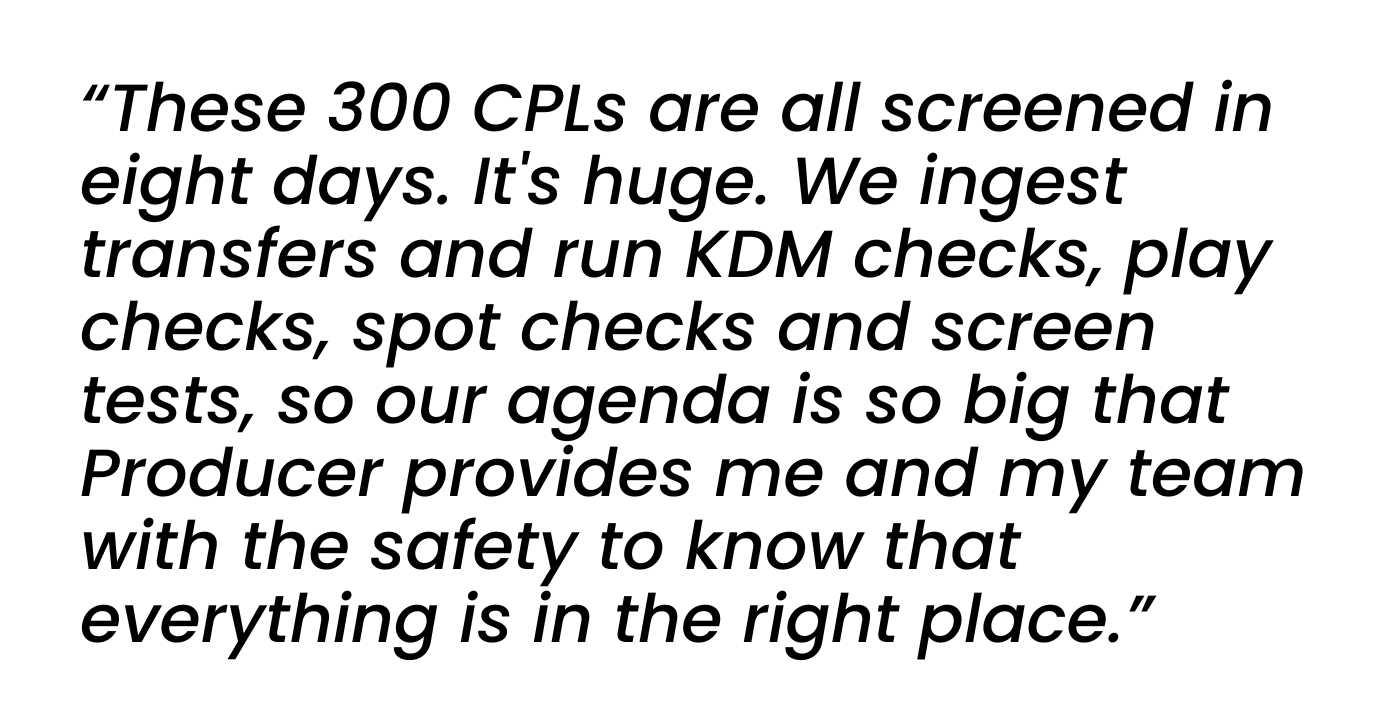 While enhancing content and KDM management, Producer’s ability to strengthen collaboration and coordination within his team was a pleasant surprise for Lucas.
While enhancing content and KDM management, Producer’s ability to strengthen collaboration and coordination within his team was a pleasant surprise for Lucas.
“What I think is most interesting about Producer is that everyone can know what the situation is relating to a screen or film. If they’re in their own house or in the office, all the content shows in one place. It allows us to plan better, to forward a screening test, to spot check, or to know if we have to do a last minute content change. We have 22 screens and with Producer we can get the details of each one.”
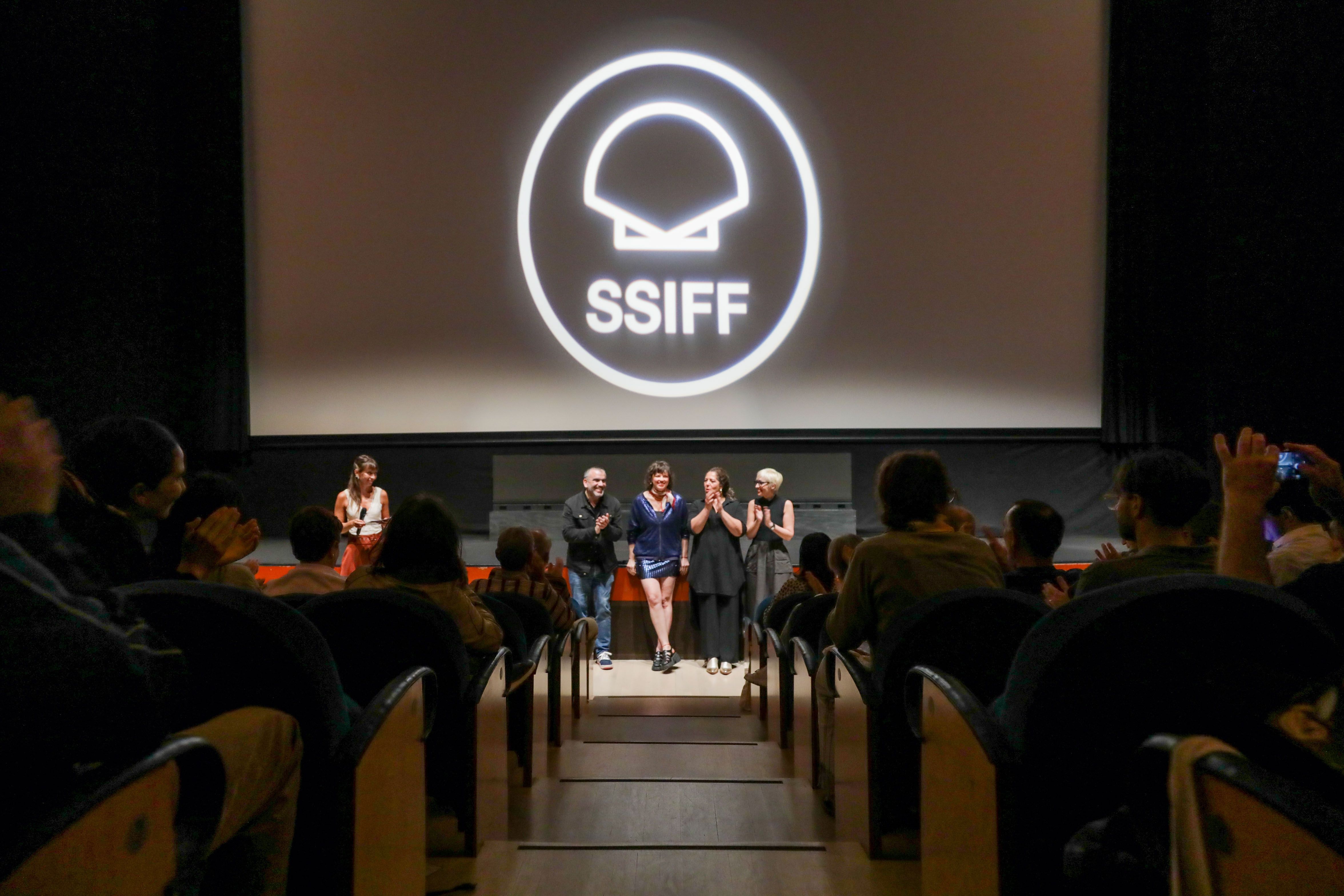 Credit: Álex Abril
Credit: Álex Abril
Instead of fast, radical changes, SSIFF’s transition to digital event management has been methodical and selective, refining individual workflows at a steady pace. Analysing the journey to present day, Lucas identifies the COVID-19 pandemic as a significant driver behind their new digital foundation.
"During my time at SSIFF it’s been digital, but we’ve been through the pandemic and we’ve had to change. COVID-19 accelerated the shift from physical delivery methods, like USB 3.0 or CRU drives, to internet-based delivery. Suddenly we had to manage and deliver a lot of content. It was really game changing in how we received and checked all that material, and reorganised our workflows in terms of Quality Control and delivery. Content distribution requires careful coordination and reliable network systems so we had to create new networks and delivery methods.
Due to the pandemic, the Festival’s cultural events had to become a smaller for a short while but they’ve since started to grow again. 2024 was a powerful Festival year. It's like pre pandemic. We are digital, we only have about four hard drives, keeping around ten on standby to reach locations in case of emergency.
The pandemic was the big challenge and the big evolution.”
3. Safeguarding Quality and Performance
At SSIFF, quality and performance are of utmost importance. This unwavering commitment to excellence and meticulous attention to detail have earned SSIFF a place among the world’s top 14 Competitive Feature Film Festivals, as recognised by the FIAPF (International Federation of Film Producers Associations). The FIAPF, a global authority in the film industry, regulates and accredits international film festivals, ensuring they uphold the highest standards of professionalism and cultural significance; a notion Lucas believes in whole-heartedly.
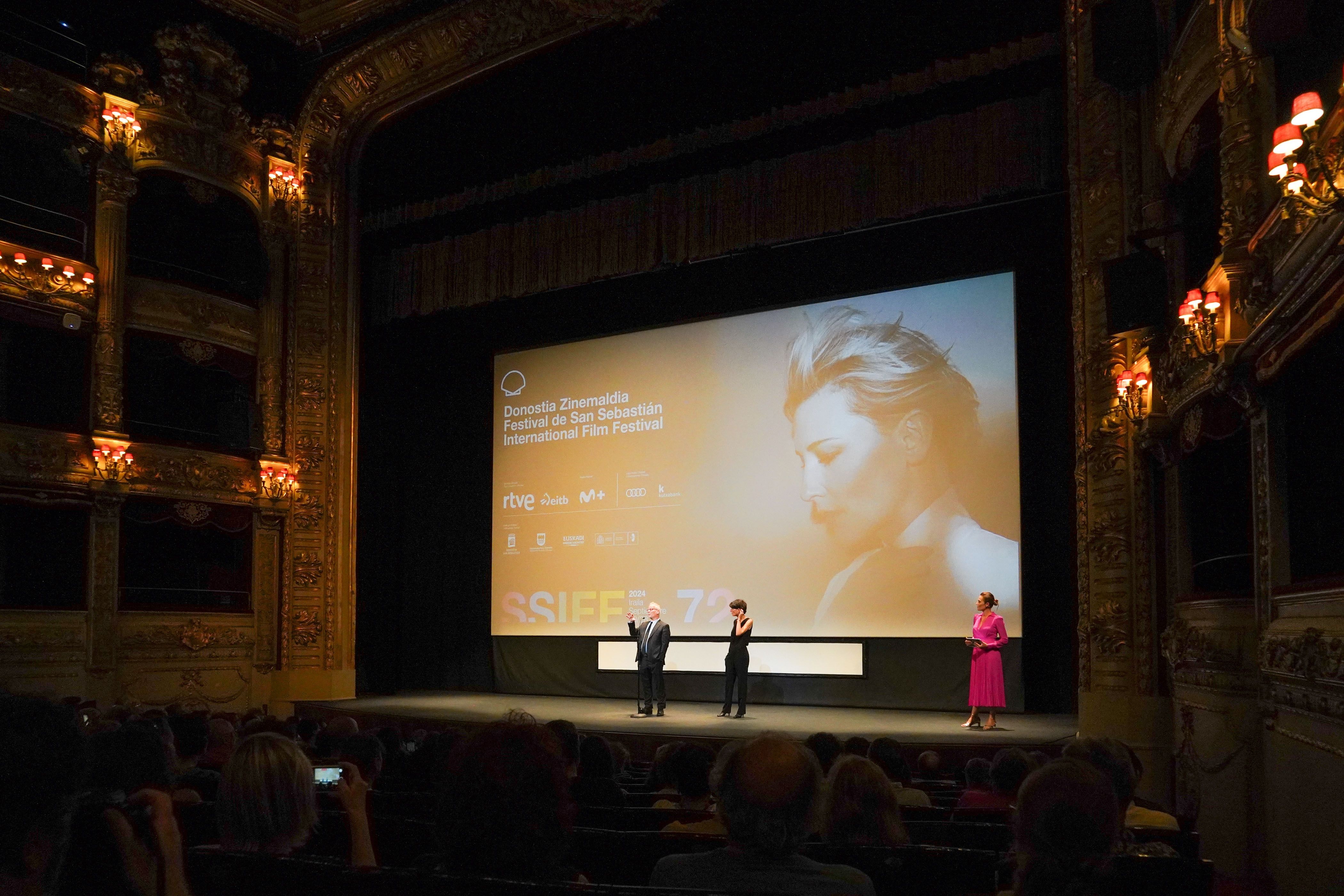 Credit: Nora Jauregui
Credit: Nora Jauregui
“My vision, and the vision of the board, is that the performance and quality are the most important things for a high profile festival like this. The filmmakers trust in our performance and our quality to be able to premiere their films. They want to screen here because they know that everything is going to be fantastic. That's part of our spirit.”
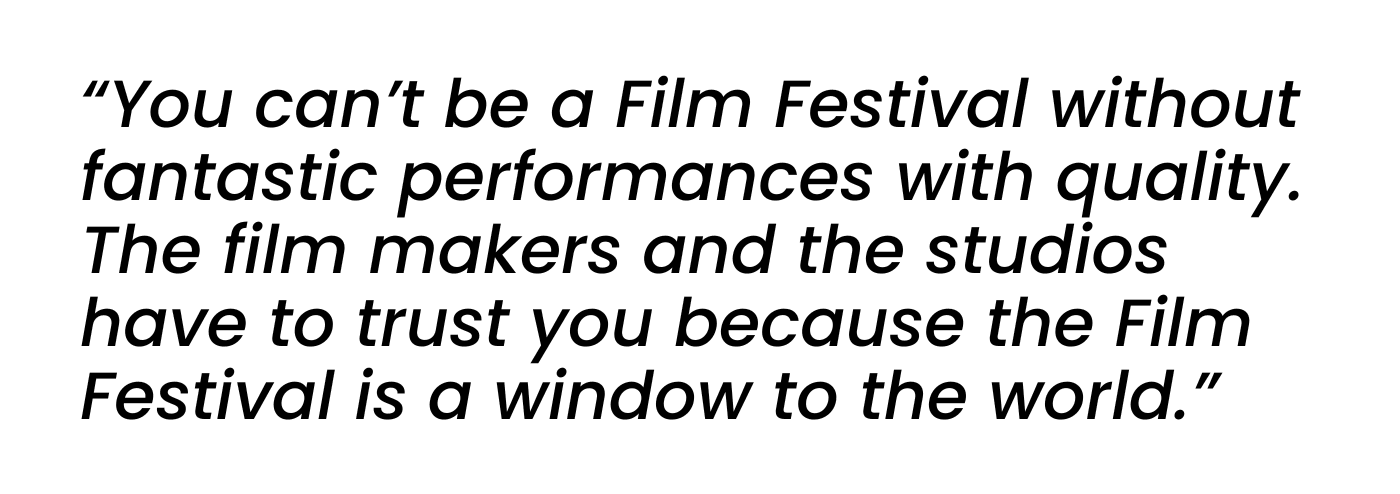 Located in the Basque Country of Northern Spain, the Festival is famed for its idyllic and cultural setting, rich history of delivering world-class European premieres, including Alfred Hitchcock’s Vertigo (July, 1958) and George Lucas’ Star Wars (September, 1977), now known as Star Wars: Episode IV – A New Hope, and commitment to diversity and innovation. To create further history, Lucas recognises the importance of reliable, first-rate technology.
Located in the Basque Country of Northern Spain, the Festival is famed for its idyllic and cultural setting, rich history of delivering world-class European premieres, including Alfred Hitchcock’s Vertigo (July, 1958) and George Lucas’ Star Wars (September, 1977), now known as Star Wars: Episode IV – A New Hope, and commitment to diversity and innovation. To create further history, Lucas recognises the importance of reliable, first-rate technology.
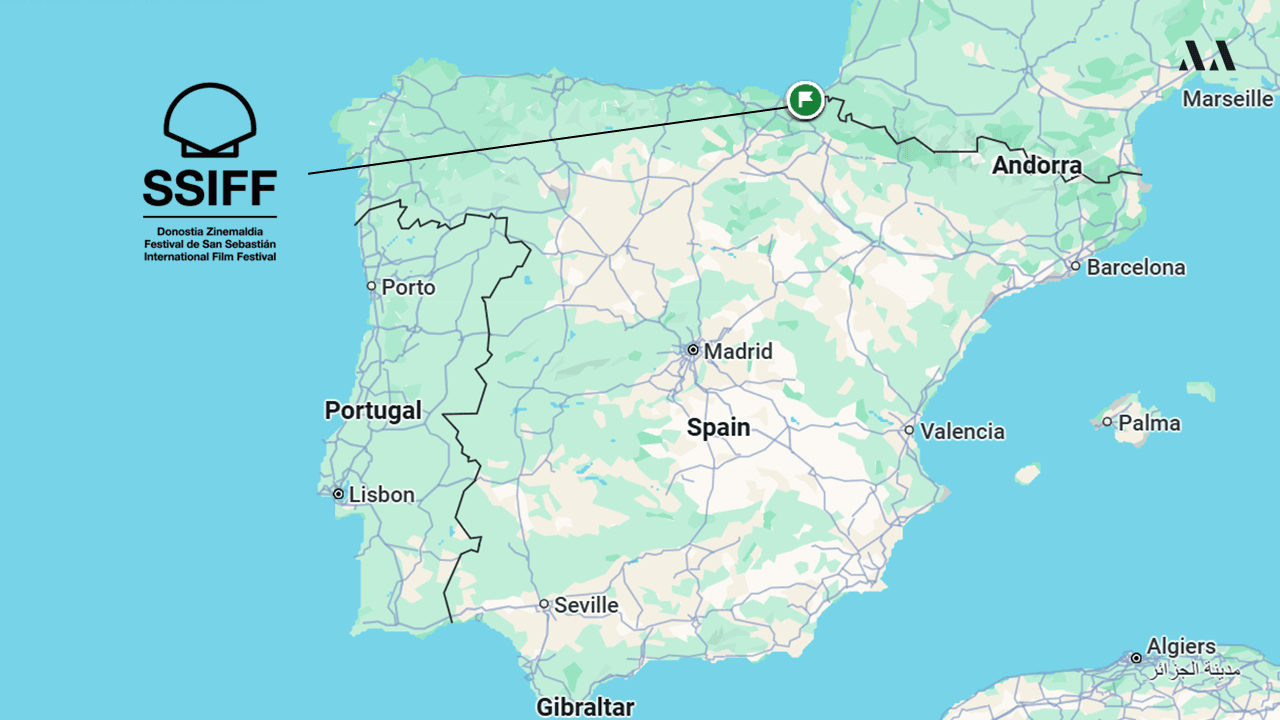 Google Maps: SSIFF is located in Northern Spain
Google Maps: SSIFF is located in Northern Spain
 Ours is growing, so technically, we have to grow too. Myself and the Festival agree that we need to improve constantly. Technology is constantly evolving, the films are getting bigger, and sadly the cinemas are getting older, so we have to be very smart and react quickly because there is no place for error. If there is any failure, we have to be able to deliver content using a backup TMS and backup systems. The Festival has always been very supportive with this idea and we are constantly investing in equipment.
Ours is growing, so technically, we have to grow too. Myself and the Festival agree that we need to improve constantly. Technology is constantly evolving, the films are getting bigger, and sadly the cinemas are getting older, so we have to be very smart and react quickly because there is no place for error. If there is any failure, we have to be able to deliver content using a backup TMS and backup systems. The Festival has always been very supportive with this idea and we are constantly investing in equipment.
To guarantee seamless Festival operations, Lucas employs a backup TMS as a failsafe, ready to take over in the event of any malfunction with the primary system.
• TMS A located at SOTOA (Primary system)
• TMS B located at Teatro Victoria
The fact that Lucas’ backup TMS systems have never been needed speaks volumes about SSIFF’s ‘no-margin-for-error’ ethos. Through it all, Lucas not only understands the immense weight of expectation but thrives under it.
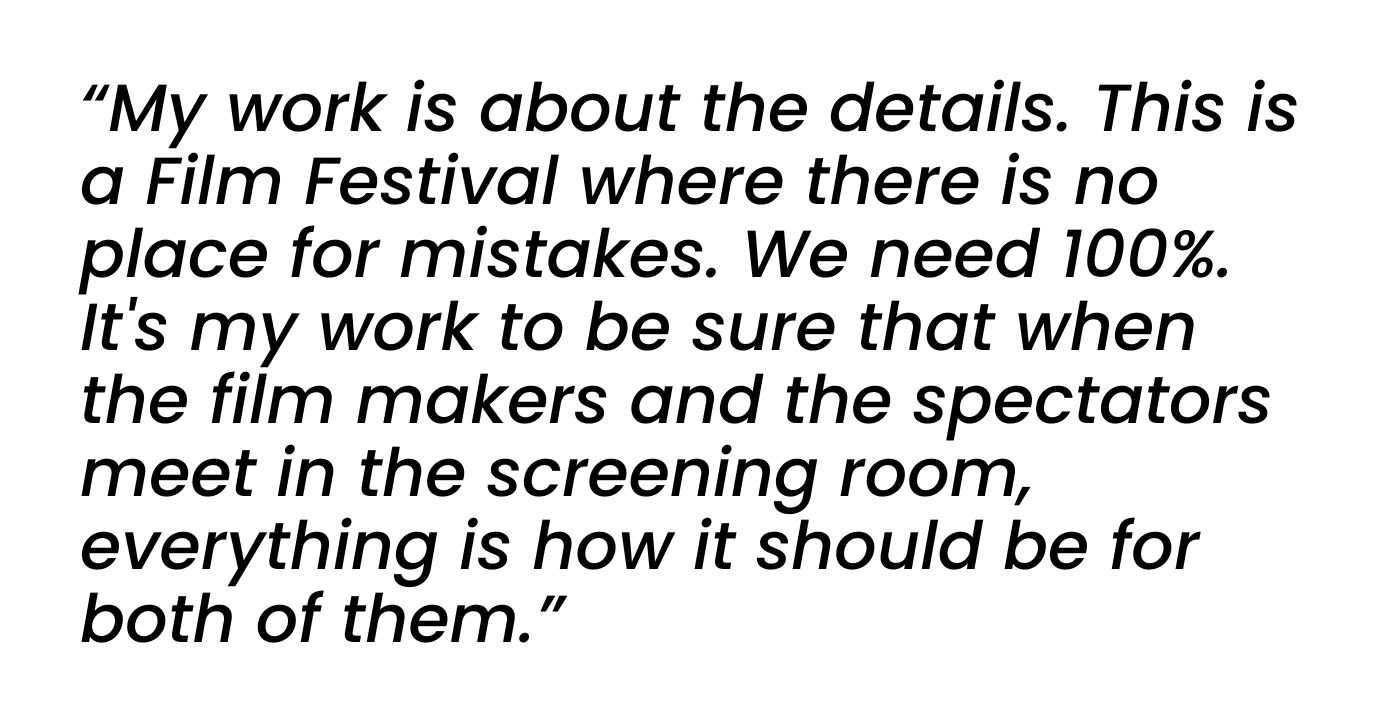 “The screening of a film is the end of a very long, costly, difficult and personal process for a lot of people and we have to be prepared for that.”
“The screening of a film is the end of a very long, costly, difficult and personal process for a lot of people and we have to be prepared for that.”
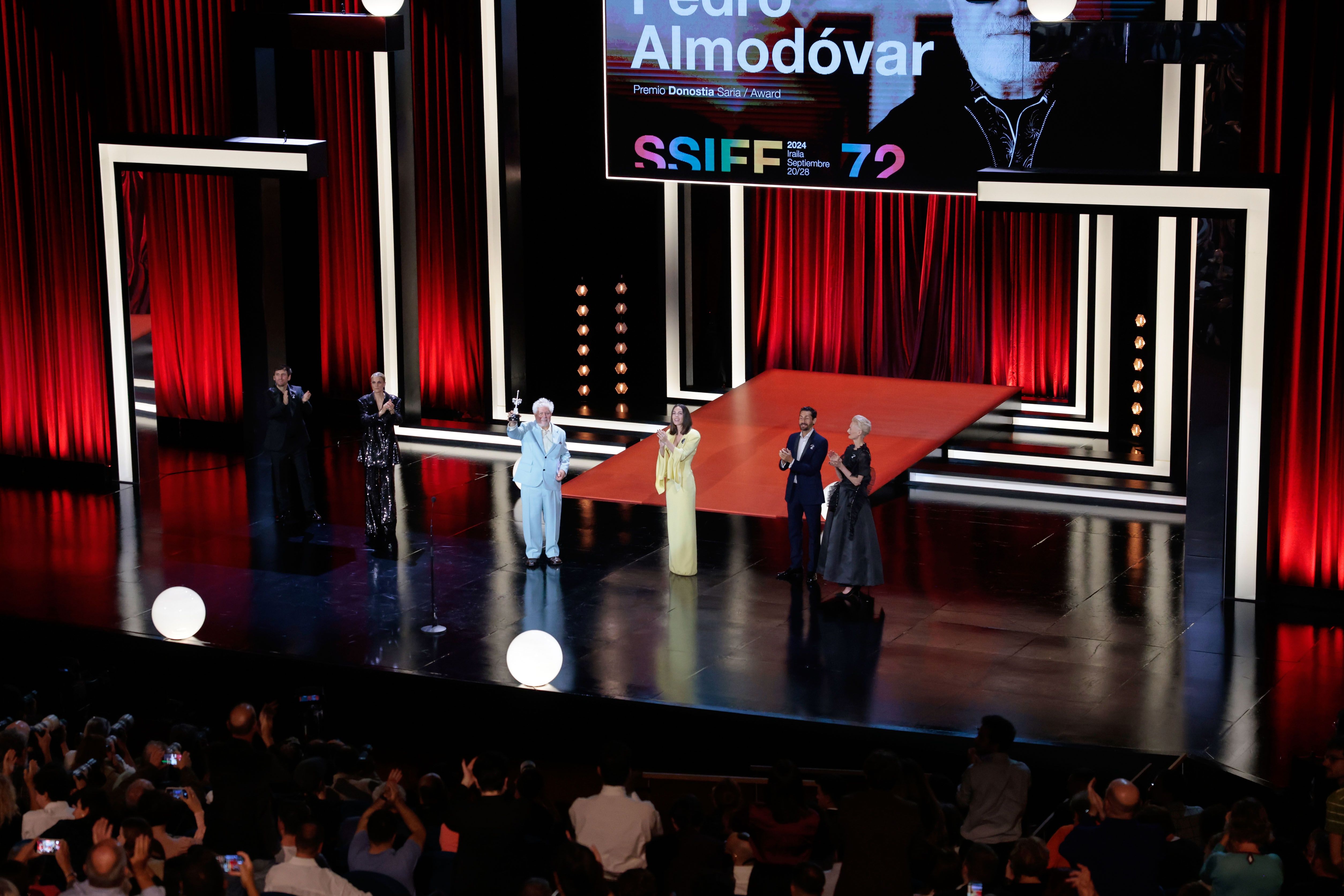 Credit: Jorge Fuembuena
Credit: Jorge Fuembuena
That preparation is embodied by the stringent QC processes undertaken before each screening. Included within that are the screening checks each filmmaker has available to them to guarantee quality assurance and peace of mind.
“The quality and performance are what worries the film makers, and that’s why we provide everyone with the option to screen test the film.
For us, the technical checks with the directors of each movie are very important. We are a festival that understands the work that has been necessary to produce each film so we ensure everyone has the option to have a screening test. This means they can be sure everything's perfect, that the volume is set up perfectly, and they can relax. We know that our workflows, our equipment and all of our technicians and projectionists are excellent. So what we really care about is that the filmmaker can relax and be sure that when the lights are going down to present their movie, everything's going to play just like they want.”
Before the all-important screening tests, Lucas describes how SSIFF’s diligent Quality Control team use both Screenwriter and Producer to ensure content is ready to play.
“The Quality Control team use Screenwriter to know which films have arrived and to transfer content to the Quality Control rooms. The Quality Control Technicians also use Producer to check if they have content and that it's correctly ingested and the KDMs are open.”
 To proactively address potential issues, Screenwriter will display a warning symbol in the Playlists tab if CPLs are corrupted or KDMs are invalid, allowing users to act swiftly. Additionally, users can hover over each Screen icon to instantly review any live issues related to content or devices, allowing users to act swiftly.
To proactively address potential issues, Screenwriter will display a warning symbol in the Playlists tab if CPLs are corrupted or KDMs are invalid, allowing users to act swiftly. Additionally, users can hover over each Screen icon to instantly review any live issues related to content or devices, allowing users to act swiftly.
In Producer, meanwhile, issue reports are delivered to a chronological page known as the Tasks feed. From highlighting missing content and KDMs to identifying device issues, this practical timeline view supports the QC team by ensuring systematic circuit control.
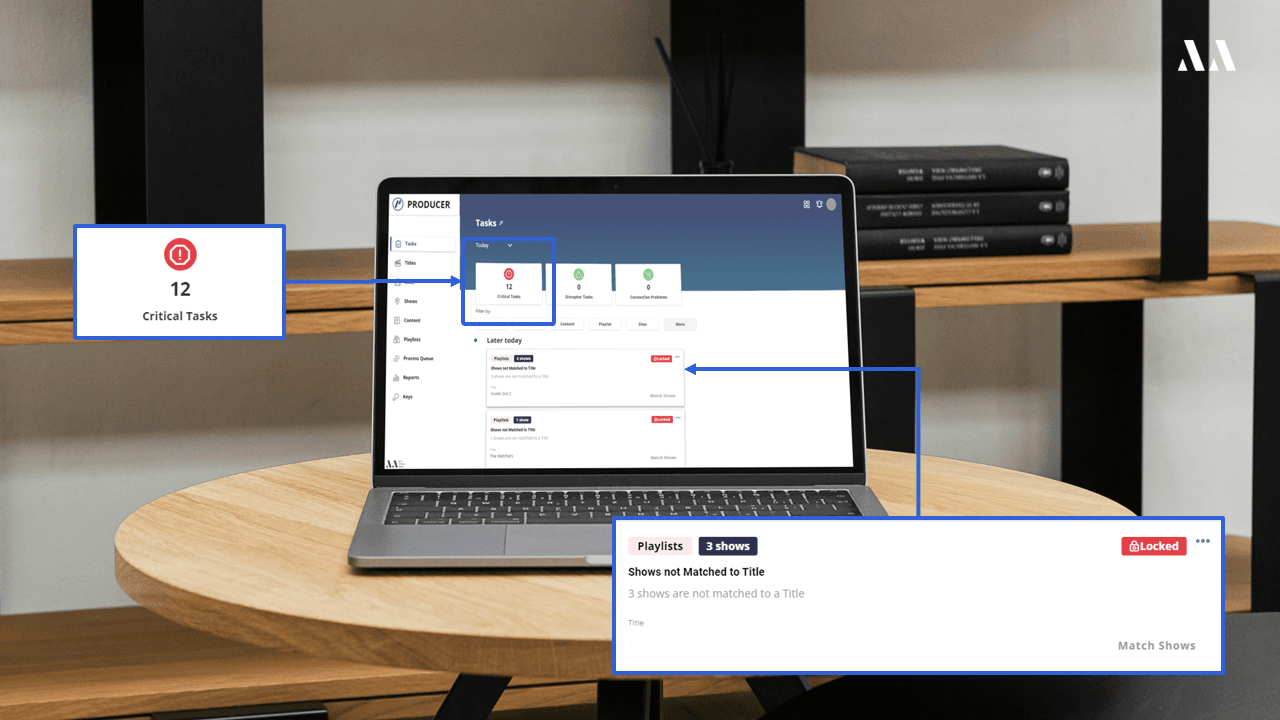 Producer's Tasks feed dashboard
Producer's Tasks feed dashboard
“Once the films are checked and everything is perfect, the Distribution Coordinators can deliver them to the screening room to our KDM Manager who can deliver the KDMS to all the cinemas. Myself, as Technical Manager, use Producer and Screenwriter to check that all the details can be seen.”
4. Innovating with Arts Alliance Media
In 2024, SSIFF and Arts Alliance Media celebrated a decade of partnership; a period in time which has defined global cinema and the technology that supports it. Since 2014, the Festival has grown significantly, adding 4 screens while growing its spectators by 16,797.
• 2014: 169,010 spectators, 20 screens
• 2024: 185, 807 spectators, 24 screens
As the festival has evolved, so too has Screenwriter’s diverse feature-set which Lucas labels as a considerable contributor towards streamlining the organisation’s practices.
“The partnership with Arts Alliance Media and the use of Screenwriter has been fundamental in the last five or six years to be able to reach our programming team’s goals and meet the technical requirements. The films are getting bigger and the DCPs are being sent through the internet so there is no place for physical assets in today’s digital cinema.”
Throughout the partnership, Arts Alliance Media’s Technical team has been readily available to address technical queries, provide strategic advice on scaling and optimising operations, and deliver sandbox test environments upon request. This proactive collaboration played a pivotal role in the deployment of Producer. Open communication and a shared commitment to make the software operational is what led to its successful Festival debut at the 2024 edition of SSIFF.
Timeline for Producer Deployment:
2022:
• June: Lucas first learns of Producer at CineEurope.
2023:
• June: Producer formally presented as an opportunity to further streamline Festival operations. Consultation period begins to understand how Producer can work in the Festival environment.
2024:
• May: Access to a sandbox testing environment is granted.
• August: Lucas approves usage of Producer after testing.
• September: Producer is officially operational at SSIFF.
On the ground, all local support and hands-on technical assistance are expertly managed by Kelonik, a Spanish technology integrator, trusted technology partner of AAM and long-time collaborator with SSIFF. With this combined support package and product suite, Lucas has found the freedom to finetune event operations and lay the groundwork for further expansion.
 Credit: Pablo Gómez
Credit: Pablo Gómez
“Soon we are going to have more screens so we will need to be able to integrate them to our network, to Screenwriter, and to finally connect all our spots and all our Screenwriter locations with our own fibre optic.
Then, we will work with Arts Alliance Media and Kelonik about how we can reach all these places, to think about the whole network and our workflows. In terms of how we manage the content, how we deliver the content, and how the stages are set up. From the moment that we receive the film from the filmmaker, to moment the spectator is finally in front of the screen.”
The Global Leader in Cinema Technology
- Legal